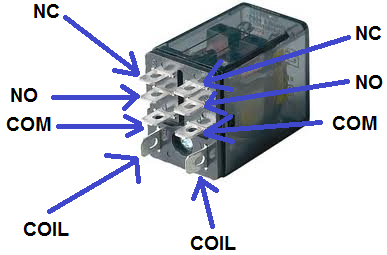I have several of the Scotts Odds N Ends DPDT relays from my old layout that I used to activate some of my crossing signals. They worked very well and I would like to use them again on the new layout I am putting together. For the life of me, I can't find the wiring diagram for them! would someone out there please share the diagram with me or point me to a reference? Thank you!
Replies sorted oldest to newest
Can you supply a photo? Then we can instantly tell you the answer.
In the mean time, you can use this information and provide yourself with the answers and some self-reliant electrical experience:
A relay has a coil and the coil has two leads that need to be energized to operate the relay. A DPDT relay (correctly referred to as a relay with two transfer contacts) will have two terminals for the coil, and 6 other terminals. Two COMMONS, two MAKES (normally open) and two BREAKS (normally closed.) You will see eight terminals or leads on your relay.
Generally, the terminals are labeled, or the factory leads are in a color code that is intuitive, or you can see into the relay cover if it's clear and see the actual internal wiring. If the relay is mounted on a printed circuit board, (PCB) you may be able to reverse-engineer the traces (conductors) on the PCB. Find two that go off toward the coil area and find two sets of 3 that go to the other part of the relay structure.
Take your ohmmeter and check two of the terminals (generally situated separate from the contact terminals) for continuity. If you get a reading, but not a dead short, they are probably the coil terminals. Take two test leads and momentarily apply the assumed voltage and type of electrical source. Maybe 12 Vac? Do you hear or see the armature moving?
Now with the supply arranged through a momentary switch that will operate the coil, use the meter to find the common and make contacts of both poles of the relay. The meter will go from infinity to a dead short when you find the correct pair of terminals. The break contacts can be found the same (er...actually opposite) way. They will go from a dead short to infinity when the coil is energized.
Just visualize what's going on inside the relay and you will have success.
https://ogrforum.ogaugerr.com/t...ignal-relay-for-sale
Is this the one? You can see through the plastic cover. That makes figuring out the wiring easy.
this might help too, you can see the coil connections look different from the two sets of contacts.





